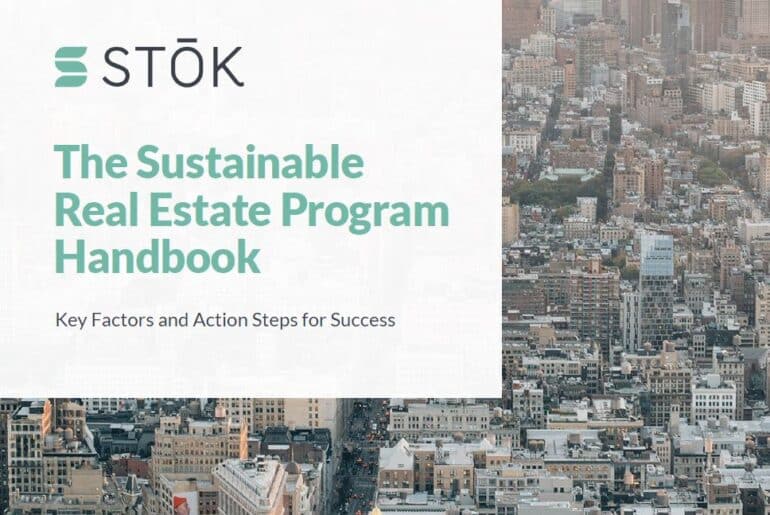Guest post by Nicole DeNamur and Erik Jennings.
Building Performance Standards (BPS) – which set performance or emissions standards that buildings must meet over time – have completely changed the regulatory context for existing buildings. Colliding with this new regulatory framework is the steadily increasing focus on Environmental, Social, and Governance (ESG) metrics and reporting frameworks. In this new landscape, lease language should be a key part of every risk management, compliance, and ESG strategy. Leases also present an opportunity for owners to engage tenants in a dialogue regarding innovative and broader social goals that benefit the communities where assets are located.
This blog post outlines key obstacles, innovations, and opportunities to update lease language to align with BPS and ESG goals.
BUILDING PERFORMANCE STANDARDS AND ESG PRESENT CHALLENGES TO “TRADITIONAL” LEASES
First, context. BPS are a new type of regulatory tool designed to help solve a key issue: for a variety of reasons, the existing building stock presents significant challenges to climate goals. In recognition of these issues, state and local governments have been steadily enacting BPS. For many jurisdictions, it’s not a matter of if, but when, existing buildings will be subject to these types of requirements.
Yet these standards are a completely new type of regulatory tool; never before have we required existing buildings to perform to specific levels by set deadlines, with penalties for non-compliance. And owners will want – and need – the support of their tenants to comply with these standards.
While the regulatory landscape is changing, the leases that govern the relationship between owners and tenants have not kept pace – and that needs to change. Owners want to avoid penalties and ensure their buildings are compliant. Tenants want to know their obligations and potential financial exposure for compliance-related upgrades, among other things. Some tenants are also looking for office space that goes above and beyond compliance and helps them meet their own ESG targets.
At its core, ESG is a series of tools and strategies that can be used to identify, assess, manage, and report on a variety of evolving risks, including – among many others – climate and compliance-related risks. As a result, BPS compliance and ESG work go hand in hand. In fact, reporting frameworks like GRESB have specifically recognized the role of “green” leases, and various entities have provided guidance regarding the role of leased assets and lease structure in scope categorization.
If you are not looking at your existing leases and updating existing lease templates, now is the time. So, what are some of the key challenges and opportunities that updated lease language can help manage?
OBSTACLES AND OPPORTUNITIES
#1: The Split Incentive is not insurmountable
“Traditional” leases generally do not accommodate BPS or ESG considerations. Even in the best cases, they can be vague on critical points that are essential to BPS compliance and achieving ESG goals.
One initial barrier, commonly known as the “split incentive”, misaligns the incentives of the owner and tenant in making the types of building improvements that may be required to achieve required performance or emissions targets. The split incentive has been a factor for as long as modern leasing practices have existed, but the misalignments in the parties’ motivations present a fresh set of challenges when viewed through a BPS/ESG lens. In short, owners traditionally have not seen much value in paying for significant efficiency upgrades. This is because while owners pay for the costs of building-scale upgrades, tenants pay for the majority of utilities, yet they typically do not stay in a building long enough to realize a net benefit in lower utility costs, resulting in minimal incentives for tenants to contribute to efficiency upgrades.
Depending on the age, design, and use of a particular building, significant upgrades may be required in order to achieve BPS compliance. This further complicates the split incentive because of the traditional treatment of costs for capital improvements in leases. Capital expenditures or improvements are significant investments into a building, and most sophisticated tenants impose strict limits on an owner’s ability to pass through such costs. Typically, owners can only pass these costs through in a small number of circumstances, and even then, the costs are usually amortized over the life of the improvement (i.e. longer than the lease term), resulting in only a partial cost recovery.
Creative parties can find ways around these traditional barriers by adding language that clarifies the types of expenditures and fairly allocates costs, effectively aligning owners and tenants towards shared goals instead of placing them at odds. A few considerations:
-
- Classify that BPS related improvements are a separate category of capital expense with a fair and transparent method of cost sharing.
- Provide for sharing of monetary or in-kind incentives between ownership and current and future contributing tenants, in exchange for greater tenant contributions.
- Expand the owner’s ability to continue to amortize capital costs, in an equitable and transparent manner, to tenants who sign leases after the costs were incurred but still share in the operational benefits.
#2: Accurate tracking and information sharing can ensure fairness
ESG done correctly is data-driven, and as data collection and access issues (as well as confidentiality concerns) become an increasingly common part of building operations, they should be addressed in the lease. Otherwise, owners may have no other avenue to access this information and may be unable to meet their compliance and ESG reporting requirements. Further, by having accurate tracking and data transparency, all involved parties will be better equipped to make real time adjustments needed to ensure compliance with BPS limits and to better achieve and report on ESG goals and metrics.
#3: Fairly allocate potential penalties
While each jurisdiction will approach it differently, in general, the penalties for noncompliance under BPS laws will be assessed against building owners, regardless of cause. Typical commercial leases do not permit owners to pass legal penalties or fines imposed on the building on to the tenants, which could result in an owner being solely responsible for payment of noncompliance penalties even though they were without fault. Without clear lease language, owners would also likely be without recourse against tenants who exceeded their energy budgets and tipped the building out of compliance.
To avoid this, owners should establish energy allocations for each tenant based on need and historical use, implement an equitable and accurate way to track and report consumption for each tenant, and rethink how monetary penalties related to BPS (or similar) violations are handled in the lease. Doing so will benefit not only the owner but will give tenants the information they need to (1) track their consumption against projections and (2) ensure they are not paying into a penalty that was the result of actions of one or more other tenants in the building (or the owner’s operation of common areas).
INNOVATION AND OPPORTUNITIES
While BPS laws present an imminent consideration, in many cases they should be viewed as a floor to achieving climate and ESG goals. In order to meet even modest limits on global temperature increases, building owners and tenants will need to go much further and take a leadership role in moving the industry forward. Leases can be a useful vehicle to support this work by fostering collaboration between tenants and owners when it comes to BPS and ESG goals.
Thoughtful, fair, and well drafted leases can be used in conjunction with building-wide energy management and/or sustainable operations committees to promote very high performing, healthy, and more inclusive buildings. Moving beyond compliance, if owners or tenants are starting from scratch with a new lease, or opening an existing lease up to negotiation, they can take the opportunity to think through a few issues and potential opportunities to manage risk and move the market in the right direction (or at least start a conversation).
#1: Strive for clarity with some flexibility for the unexpected
Commercial leases can have long terms, and things are changing incredibly quickly in the sustainability and ESG spaces. Lease language should be crafted to consider expected future challenges and regulatory obligations.
Consider and plan for issues that are likely to impact compliance in the future, including water allocation and embodied carbon:
-
- In the near future, water usage is likely to be restricted similar to how performance standards currently allocate energy use. Until requirements are mandatory, lease language that fosters water stewardship and conservation demonstrates leadership, supports many ESG goals, and can provide a pathway for future compliance.
- As operational requirements become the norm, embodied carbon is likely to receive increased regulatory scrutiny. Owners can leverage lease language to establish embodied carbon limits or require the use of lower embodied carbon materials (or set limits based on industry best practice) for repairs, tenant improvements, and related upgrades/purchases.
#2: Health and wellness is in high demand
Health and wellness strategies, and spaces certified under programs like WELL and Fitwel, are in high demand. Healthy buildings can manage risk, build resilience, and align with ESG frameworks. The latest research also demonstrates how healthy buildings can garner longer lease terms, which reduces turnover and other administrative costs.
When implementing healthy building strategies, review lease language, including rules and regulations to ensure owners and tenants are aligned on relevant aspects (including, for example, on-site food and beverage options, emergency preparedness, and cleaning protocols).
#3: Impacts beyond the four walls of the building
Real estate assets do not exist in a vacuum – they are an integral part of the communities where they are located. Leases are one tool that both owners and tenants can use to drive positive change beyond the building. Two examples:
-
- Establish ownership’s ability to utilize common spaces for community resilience; for example, heating and cooling centers in the context of weather-related emergencies.
- One aspect that is often overlooked in the real estate context is the ability to influence supply chain diversity. Consider adding lease language that requires or encourages diverse spending requirements for vendors and suppliers. There are many opportunities to support small and diverse-owned businesses – from janitorial to landscaping to catering – and owners can support this work through lease requirements.
BPS requirements already exist in several jurisdictions, are being looked at in many others, and will play a critical role in achieving climate goals and managing risk within the existing building stock. Traditional leases are not well equipped to fairly and effectively address evolving BPS compliance issues. Building owners and tenants concerned with compliance and who want to achieve their own ESG goals will need to get creative and rethink traditional leasing practices.
Disclaimer: This article is for informational purposes and does not provide legal advice. It is not intended to be used or relied upon as legal advice in connection with any particular situation or facts.

Nicole DeNamur (she/her)
Sustainable Strategies, Owner
J.D., WELL AP and Faculty, LEED Green Associate
Fitwel Ambassador, Hon. AIA
Nicole DeNamur is an attorney and sustainability consultant, based in Seattle, WA. She helps her clients identify and manage the risks of sustainable innovation so they can pursue robust sustainability goals. Nicole’s strength lies in her ability to view sustainability issues through a legal and risk management lens. She is an award-winning contributing author and has developed and taught graduate-level courses at the University of Washington and Boston Architectural College.

Erik Jennings (he/him)
Partner, Pacifica Law Group
Erik Jennings is an attorney whose practice encompasses all aspects of real estate ownership, operation, financing, and development. He regularly represents public and private clients in commercial leasing transactions (landlord and tenant), real property acquisition and development, ground leases, risk management, and dispute resolutions. He has extensive experience negotiating lease agreements for office, retail, and industrial properties. As part of his leasing work, Erik counsels clients on building performance standards, clean building laws, and sustainability goals. Erik also teaches real estate at the University of Washington.



